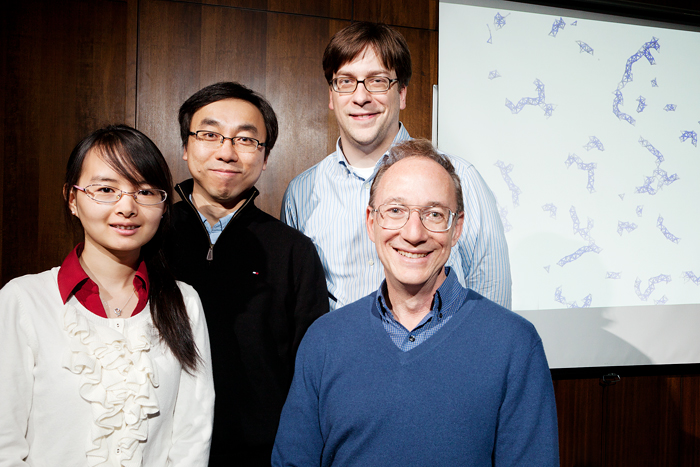Researchers from the University of Illinois and Northwestern University demonstrated structures that organize independently inspired by nature and which consist of simple building blocks - spherical particles.

The helical "supermolecules" are composed of tiny colloid globules instead of atoms or molecules. Similar methods can be used to prepare new materials with a variety of complex colloid molecules. The findings of the new study were published in the prestigious scientific journal Science.
"We are now able to make an entirely new family of 'smart' materials - a method that provides entirely new functionality that was previously unimaginable," said Steve Granick, professor of engineering, materials science, chemistry and physics at the University of Illinois.
The research team developed tiny latex spheres that attract each other in an aqueous environment on one side, but repel each other on the other side. The double nature is what allows them to create unique structures, similar to the way atoms and molecules do.
In pure water, the particles are fully dispersed due to their charged side causing mutual repulsion of the particles. However, when salt is added to the solution, the salt ions reduce the mutual repulsion and the spheres can get close enough that their hydrophobic (water-repellent) ends are attracted to each other. The attraction between these ends leads the globules to organize together into aggregates.
At low salt concentrations, small aggregates are obtained, containing a small number of particles. At higher concentrations, larger aggregates are obtained which, in the end, organize independently into chains that are built in a helical and complex manner.
"Just as atoms turn together into molecules, so these particles turn together into supercolloids," notes the lead researcher. "These pathways look very ordinary if we refer to atoms and molecules reacting with each other, but people did not realize that particles can also be treated in a similar way."
The research team designed spheres in such a way that the most suitable degree of attraction is created so that they connect to each other and still be flexible enough to allow movement, rearranging and receiving aggregates.
"The degree of "stickiness" is extremely important - you may get irregular structures composed of small aggregates, or, if the globules are too sticky, you may get a shapeless lump, instead of the beautiful structures," explains one of the researchers.
One of the advantages of the new supermolecules is that they are large enough to be seen under a microscope in real time.
The researchers were able to actually see the globules as they organized into aggregates - either by merging one globule at a time into an existing aggregate or by connecting two small aggregates together - and obtaining different structural configurations known as isomers. "We designed these smart materials so that useful forms are obtained that do not exist in nature," explains the lead researcher.
In the next step, the researchers hope to continue to explore the properties of the colloid while focusing on the development of increasingly specialized structures. These spheres, which will have different sizes and shapes, could pave the way for the development of other supermolecules and for achieving a higher level of control over their creation.
"These unique particles do have preferred structures, but now that we understand how the general mechanism works, we can apply it to other systems - smaller particles, other chemical interactions - and try to prepare aggregates that will even be able to switch between different forms," notes the researcher.
